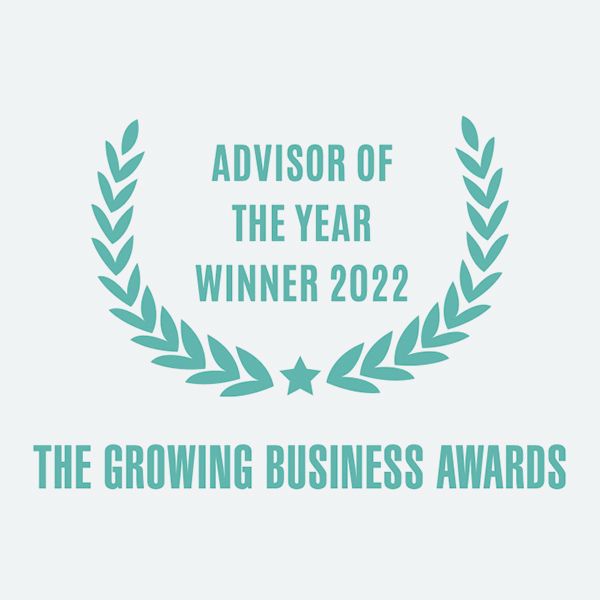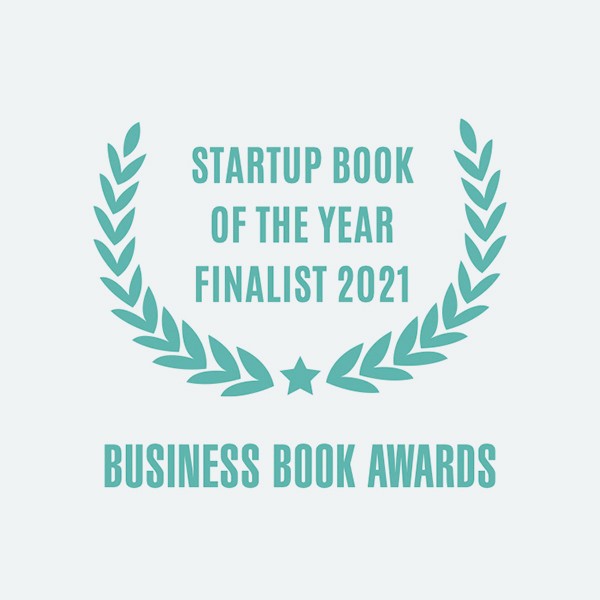

How to Create a Pitch Deck for Series A Funding
17th July 2025
Securing Series A funding means moving from early survival to rapid scale – and your pitch deck is your company’s first opportunity to make the case. Series A is typically the first round where a startup’s long-term plan for monetisation and profit matters, even if you’re not yet profitable.
READ: Funding rounds explained – a guide for startups
Investors at this stage expect to see clear evidence of product–market fit and strong growth. For example, companies raising Series A rounds often have substantial monthly revenue (often tens to hundreds of thousands of pounds) and strong month-on-month growth. In practice, Series A rounds are sizable (often £1.5m to £12m in the UK/Europe) and support building out the team, accelerating sales and marketing and preparing the business for the next level of scale.
A well-crafted pitch deck is crucial in this context. It’s often the first impression you give investors. As one expert puts it, the pitch deck is a brief explanation of a company’s vision… aiming to share key information and make a great first impression. The Series A round is critical and a good pitch deck becomes extremely important: it’s how you explain where you’ve come from, where you’re going and how the new funds will get you there.
Your Series A deck must communicate your company’s story (past and future) concisely, professionally and persuasively.
And this article will show you exactly how to do that.
And don’t forget to check out our investor pitch deck services to see how we can help you secure series A funding.
What investors expect at Series A (vs. earlier rounds)
At Series A, expectations shift from ‘building’ to ‘scaling’. In very early rounds (pre-seed, seed) angel investors often bet on the team and a compelling problem/solution – they want to see founder passion, early validation (like an MVP or pilot customers) and a strong, coachable team. By Series A, most venture capitalists insist on evidence that the idea really works at some scale.
Key differences include:
Traction and metrics
Investors want proof of demand. This typically means recurring revenue, solid user or customer growth, retention metrics, or other usage figures. By Series A many startups report monthly revenues on the order of £25,000 to £80,000+, with strong growth and burn rates under control. Investors will dig into unit economics like customer lifetime value (LTV) vs acquisition cost (CAC) to see that your model can scale.
READ: How to Get Traction for Your Startup
Market size
VCs need big wins. They look for businesses in large or fast-growing markets. As one VC checklist advises, ask ‘Is this a billion-pound market? If not, it’s a tough sell. You should clearly demonstrate your total addressable market (TAM) and the specific segment you can capture in the near term.
Business model
Investors expect a clear, scalable revenue model. They will ask how you make money today (e.g. subscriptions, transaction fees, licensing) and whether margins can improve with scale. They will also look for barriers to entry or ‘moats’ (patents, network effects, technology advantages) that will protect your model. They are asking the question, ‘Is there a path to £100m revenues?’.
Team and experience
The founding and leadership team must be strong and credible. By Series A, your team is executing your vision, so highlight relevant expertise or prior successes. Investors often say they ‘bet on the jockey, not the horse’ – meaning a great team is often more persuasive than the idea alone. Expect to explain why this team can capture the opportunity.
READ: How startups can attract and secure top talent
Growth plan
In a Series A pitch, your go-to-market strategy and growth plan matter. Seed decks focus on building a product and getting first users; Series A decks should show how you will scale customer acquisition (new markets, sales channels, marketing campaigns, partnerships, etc.). Investors will want to understand how you will win customers and grow revenues.
Product–market fit
By now, you should have evidence that users love your product. If not, at least show that the product is solving a real pain and that customers are willing to pay. For example, investors tell us that founders should ‘make the problem as real as possible’ and show ‘credible market pull’.
Professionalism and brand
Series A investors increasingly care about the company, not just the product. They expect you to look like an established, forward-thinking business. Institutional investors at Series A aren’t just investing in your product… they’re investing in your company – a fully-formed company with clear messaging, well-defined brand guidelines and a cohesive presentation.
READ: 12 ways to build brand credibility
In practice, this means your pitch deck (and website and marketing) should look polished and consistent.
One key rule of thumb: your deck and branding should look like the billion-dollar business you promise to become. Investors notice if your slides are sloppy or off-brand, as it suggests a lack of attention to detail.
Due diligence readiness
Series A investors expect to dig deeper into your business before signing a cheque. They will look at financial KPIs, legal contracts, intellectual property, employment agreements and even ESG policies. While this isn’t part of the deck itself, it means any claims or numbers in your deck should match what’s documented in your data room and legal files. In other words, be prepared for scrutiny: clean books, signed contracts and updated cap tables all boost investor confidence.
Compared to earlier seed rounds, a Series A pitch must show a scaling business: big market, real traction, a clear path to more growth and a team ready to deliver it.
Key components of a series a pitch deck
While there’s no fixed format, Series A decks typically cover the following slides. Each should be concise (about 10–15 slides total is common) and visually clear.
Below we outline the usual components and what to include in each slide:
1. Cover/introduction
Start with your company name, logo and a compelling tagline or one-line summary. Introduce who you are and what you do at a glance. Keep this slide simple – a striking image or bold statement can set the tone. This is your first impression, so make sure it looks professional and on-brand.
2. Problem (pain point)
Describe the customer pain or market problem you are solving. Be specific about who is affected and why current solutions aren’t good enough. Tell a short, relatable story or use data to illustrate the problem’s size. Avoid vague platitudes; instead, a crisp example or statistic can help.
3. Solution
Immediately follow with how your product or service solves that problem. Describe your solution clearly and simply. Explain your offering in concrete terms and avoid buzzwords. If your solution has multiple components, focus on the core one. Illustrations or screenshots are useful here – show the product in action. Explain why your approach is unique or better than existing options.
4. Traction
Show that your business is already working. Highlight key achievements to date: revenue figures, user growth, major customers or pilots and important milestones (such as funding rounds, partnerships or product launches). Use charts or bullet points: for example, ‘Revenue grew 3× in the last year,’ or ‘Signed 10 enterprise clients this quarter.’ This slide should reassure investors that there’s real demand for your solution and that you can execute.
5. Market opportunity
Show that you have a large and growing market. Present data on your Total Addressable Market (TAM), Serviceable Available Market (SAM) and how you plan to capture a share. This slide tells the story of the scope and scale of the problem by outlining market size and trends. Use charts or graphs (e.g. TAM growth projection) to make this compelling. Explain your target customer segments and any relevant market trends (e.g. increasing demand, regulatory changes). The goal is to convince investors that even a small piece of this market represents a big opportunity.
6. Business model
Explain how you make money. Detail your pricing strategy, sales model and unit economics. For example, if you sell software, clarify your pricing tiers or average revenue per user; if you’re a marketplace, show your take rate. Include any relevant metrics like CAC (customer acquisition cost) and LTV (lifetime value) if they strengthen the story. Investors want to see that the model scales – for instance, platforms with low marginal costs grow rapidly, or subscription businesses with high retention become very valuable. This slide ties closely to financials, so keep it clear and realistic.
7. Scale-up strategy
Detail how you will transition from early adopters to a larger market share. Describe your sales channels, marketing plans and any partnerships or distribution strategies. If you have particular customer segments, explain how you target each. For example: direct sales force for enterprise clients, digital marketing to SMBs, or channel partnerships with industry leaders. Investors will want specifics on your marketing plan. You can use a simple flowchart or bullet points to outline this. Include key metrics if you have them (e.g. current conversion rates, pipeline size). The aim is to show you have a repeatable plan to convert the market opportunity into revenue.
8. Competitive Analysis
Show investors you understand the competitive landscape and how your solution stands out. List your main direct and indirect competitors, and use a table or chart to showcase market positioning. Clearly highlight your unique advantages. Be realistic – acknowledge competitors and explain why your company is best placed to win. Avoid claiming you have ‘no competition’.
9. Team
Introduce your founding team and key personnel. Include photos, names, titles and a very brief highlight of each person’s relevant background. Focus on founders: emphasise any prior successes, domain expertise or unique qualifications. State explicitly why these people can execute the plan (e.g. ‘former Google engineer with 10 patents’, or ‘previously sold company for £50M’). Keep bios succinct – long resumes don’t fit well in a pitch deck. You can also mention key advisors or hires if they add credibility. In short, convince investors that your team has the skills and experience to win.
10. Financials and forecasts
Present your historical and projected financial performance. Even if not yet profitable, show revenue, costs, gross margin and cash burn. Use tables and charts: for example, a simple line graph of monthly revenue or projected user growth. Show a P&L forecast for 5 years and include metrics like Annual Recurring Revenue (ARR), Monthly Recurring Revenue (MRR), burn rate and gross profit.
Be realistic: avoid overly aggressive projections.
Also, explain key assumptions briefly. If you already have revenue, highlight how it grew historically; if pre-revenue, show reasonable projections. Investors will drill into these numbers later, so ensure they align with your detailed financial model.
See examples of our winning investment pitch decks.
11. Use of Funds
Clearly spell out how you will spend the new capital. Break down the Series A funds into categories (e.g. product development, marketing, hiring, capital expenses). Explain how each investment accelerates growth.
Investors should walk away with a clear idea of your fundraising target, how you’ll use the money to reach your next milestone and what they can expect in terms of a potential return. Use a pie chart or bullets.
For example: ‘40% hiring engineers, 30% sales and marketing, 20% product expansion, 10% operations.’ This slide shows that you have a plan and fiscal discipline. Keep it straightforward.
12. The Ask
End your deck with a clear fundraising ask. State exactly how much you are raising, the round (Series A) and what investors get (e.g. equity percentage or valuation cap, if appropriate to mention). If known, mention a target valuation or range. Also note any lead investor (if already committed) or syndicate context. You can briefly remind them why you’re raising: for example, ‘Raising £X to achieve [next milestone].’
Common mistakes to avoid
When crafting your Series A deck, be sure to steer clear of these frequent pitfalls:
Too many slides or words
Keep your deck concise. Founders often cram dozens of slides or walls of text, which overwhelms investors. Aim for 15–18 slides with short, bulleted text. Use visuals (charts, icons) instead of paragraphs. Then develop an 8–10 slide teaser version.
Poor design/layout
An ugly or inconsistent design undermines your message. Use a clean, professional template – consistent fonts, colours and margins – so your deck looks polished. A strong layout guides the eye (e.g. use whitespace, logical headings). Investors see many decks; a sloppy slide can leave a bad impression.
READ: How Important is Pitch Deck Design?
Lack of storytelling
Facts alone are forgettable. Your deck should tell a cohesive story: start with a clear problem, introduce your solution, then build evidence of success. A narrative makes your presentation memorable. For instance, weave a customer’s journey through your slides or lead with a compelling vision statement. Don’t jump from slide to slide without logical flow.
READ: Let Data Tell Your Story
Hiding or lacking traction
Especially at Series A, make traction front and centre. One mistake is underplaying growth metrics or financial results. If you have revenue or key user metrics, showcase them. If pre-revenue, be prepared to explain why and what steps are underway.
Missing financials or projections
Leaving out a realistic financial model is a red flag. You must include some projections. ‘No clear financial projections’ is another common founder mistake. At least show revenue forecasts and cash burn for 3–5 years and be ready to defend your assumptions. Cherry-picking only good numbers or skipping P&L altogether will hurt credibility.
No clear ask
End with the answer to the most basic question: ‘How much do you want?’ Not stating your ask clearly (amount and purpose) is a major misstep. Make it easy for investors to say yes by being upfront.
Ignoring competition
Claiming you have ‘no competitors’ is rarely believable. Investors expect at least indirect competition (even if it’s incumbent solutions or alternative approaches). Include a slide or note on competitors/alternatives and explain your advantages (even if it’s how you’re different on price, features, or distribution) because understanding your competitive landscape demonstrates market savvy.
Using jargon/acronyms
Your deck should be clear to a smart investor who isn’t necessarily an expert in your niche. Avoid unexplained jargon or excessive acronyms. If you must use specific terms, very briefly define them or use plain-English equivalents. The clearer your communication, the less friction in understanding your value.
Data inconsistencies
One of the biggest red flags is conflicting figures between slides or documents. Ensure your numbers match across the deck, financial model and any data room docs. Inconsistencies (e.g. revenue stated differently in two places) destroy trust. Triple-check all charts and tables.
READ: The five most dangerous startup mistakes
Why design and storytelling matter
Even with the right content, how you present it can make all the difference. Your Series A deck should not look like a draft – it should be a polished, branded presentation. First impressions count: investors will judge a poorly designed slide deck harshly.
- Use consistent colours, fonts and graphics throughout and stick to 2–3 font sizes.
- High-quality visuals (charts, product screenshots, icons) help illustrate points and keep attention.
- Graphs should be simple and labelled clearly.
- Visual storytelling is powerful: for instance, a before-and-after scenario or process diagram can convey complex ideas faster than text.
- Narrative coherence is equally important. The deck should flow like a story: problem → solution → market → traction, etc. Investors remember stories and impact more than lists of facts.
- Start with a strong hook (e.g. a striking stat or a brief customer story) and tie each slide back to your core message.
Finally, reflect your brand in the design. At Series A your company should ‘look like a brand’ – everything from the deck to your website and logo should look cohesive. This signals professionalism and readiness for growth. In practice, a well-designed deck aligns with your verbal pitch and other materials, projecting confidence that you’re ready for the next stage.
Preparing beyond the deck
Your deck is just one part of fundraising.
To be fully ready for Series A, prepare the surrounding materials and processes:
Business plan alignment
Your business plan remains a vital supporting document at Series A. It gives investors confidence that your pitch is backed by thoughtful planning and credible strategy. The plan should cover your go-to-market roadmap, operational structure, key hires and expansion milestones, and it must be aligned with the claims and figures in your pitch deck. Investors may not ask for it upfront, but they’ll expect it during follow-up discussions or due diligence.
READ: 6 Reasons Why Startups Need a Business Plan for Series a Funding
Data room and documentation
Set up an organised data room (e.g. Google Drive, Dropbox) that contains all supporting documents investors will want. This typically includes:
- Fundraising docs: Your pitch deck, a one-pager (executive summary) and any fundraising memos.
- Cap table: A clear equity table showing all current shareholders, option pools, convertible notes, etc.
- Financial statements: Historical P&L, balance sheet, cash flow statements and detailed financial projections.
- Performance data: Key metrics and analytics (e.g. user engagement, cohort retention) that validate product performance.
- Customer docs: Contracts, letters of intent, case studies or testimonials that prove market traction.
- Company info: Legal documents (incorporation, IP assignments), team contracts and regulatory or technical certifications.
Consistency across materials
Ensure every statement in your deck matches what’s in your financial model and documents. For instance, if your deck cites £500K ARR, your financial spreadsheet should show the same figure. Inconsistent data or missing documents can sour investor trust. Double-check all figures and keep your story aligned across all assets.
Pitch practice
- Rehearse your presentation relentlessly. Practice with your co-founders, team members, advisors, or friendly investors.
- Pay attention to questions that stump you – they indicate assumptions you may need to clarify.
- Practice under timed conditions; a crisp delivery (even if slightly nervous) is better than rambling off-script.
- VCs expect solid knowledge of your own numbers and market – make sure you can confidently answer any tough question about your strategy, growth or finances.
READ: How to overcome presentation anxiety
Align with strategy
Finally, ensure your deck, your verbal pitch and all supporting docs tell one unified story. If your deck promises X market share or Y growth, your financial projections should forecast it and your go-to-market plan should show how. This alignment boosts credibility. Investors will notice if your plan is coherent: for example, if your slide says you’ll double users in a year, your marketing plan better justifies how you achieve it.
By going beyond the slides – organising a solid data room, practicing pitches and synchronising your materials – you show investors you are professional and prepared. A well-prepared founder can often close a deal faster; conversely, lack of preparation can slow the process or spook investors.
And finally…
Raising a Series A is challenging, but a strong pitch deck is a key enabler. Summarise your vision with clarity: define the problem and solution, show a big market opportunity, prove traction and outline the plan and team to succeed. Keep your slides crisp and visually engaging, avoid common mistakes (too much text, no metrics, etc.) and polish the narrative until it flows smoothly.
In short, be precise, data-driven and persuasive. Treat your deck as both a storytelling tool and a concise dossier of your business. Prepare thoroughly, rehearse your delivery and back up every claim with up-to-date documentation.
If you need extra confidence, consider getting a third-party review of your deck or coaching on your pitch. Many founders find it helpful to consult mentors, fellow entrepreneurs, or fundraising experts to fine-tune their approach. With diligent preparation and a compelling pitch deck, you’ll be in a strong position to impress Series A investors and secure the funding you need.
Explore our Investor pitch deck services and see how we can help you secure Aeries A funding.
Claim your Free Copy of Investable Entrepreneur
Investable Entrepreneur takes you through our winning methodology – the process we use to increase our client’s chances of raising investment by more than 30x.
“This book will help you translate your entrepreneurial vision into something investors can get behind.”
Daniel Priestley, CEO and founder, Dent Global and four times best-selling business author

Keep up to date with what we’re up to via email






Copyright ©Robot Mascot Ltd. All rights reserved.






